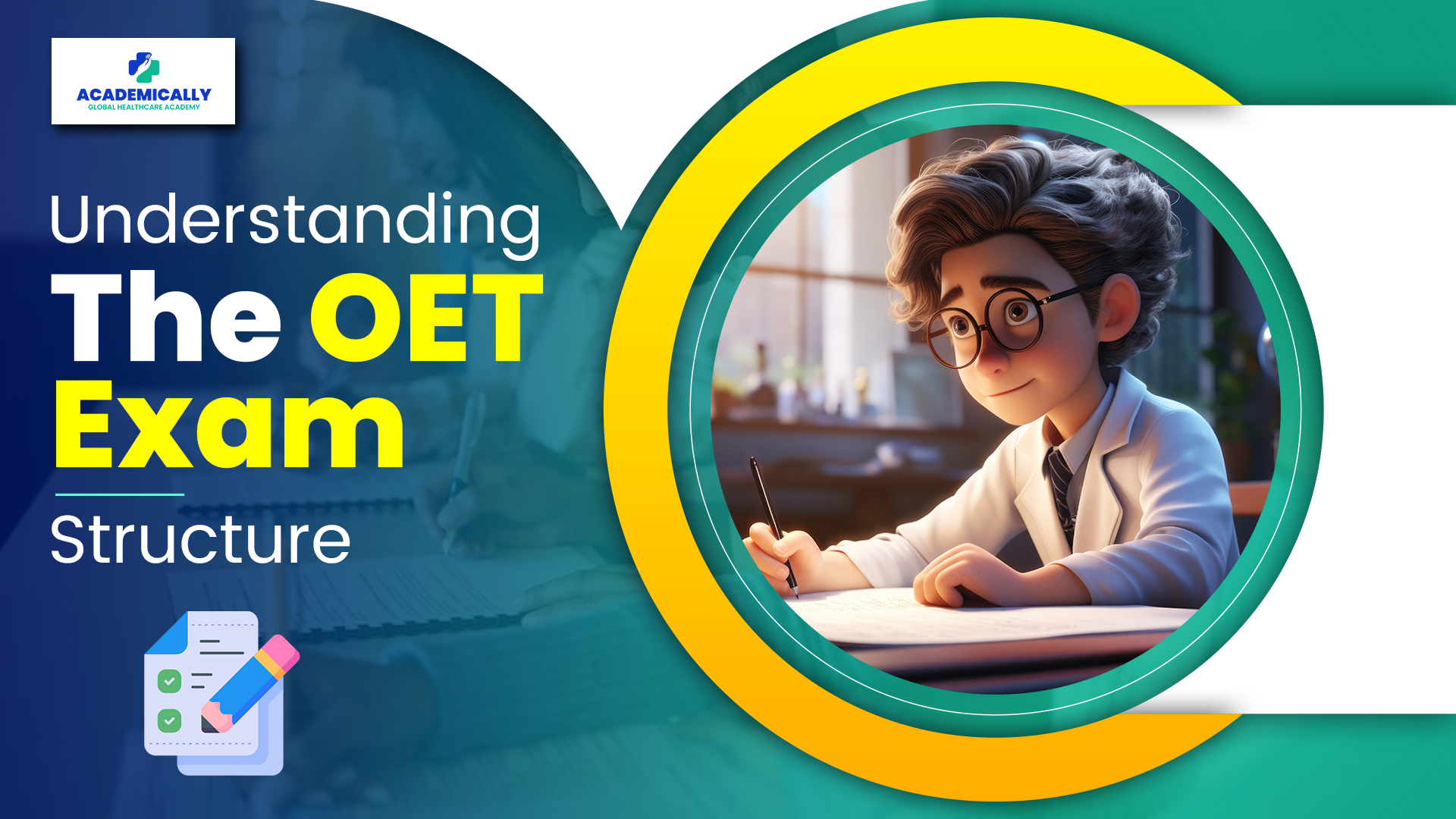Introduction to the OET Exam
The OET test is recognised as proof of English proficiency by fifteen countries, including the United States of America, Australia, Dubai, Ireland, Maldives, Malta, the Philippines, Qatar, Spain, the United Kingdom, New Zealand, Singapore, Ukraine, the United Arab Emirates, and Namibia.
The OET Test offers versions tailored to twelve healthcare professions, including dentistry, dietetics, medicine, nursing, occupational therapy, optometry, pharmacy, physiotherapy, podiatry, radiography, veterinary science and speech pathology.
OET Exam Syllabus
The OET exam syllabus covers four sections: Listening, Reading, Writing, and Speaking. Each section evaluates different skills and healthcare topics, tailored to the needs of healthcare professionals aiming to work or study in English-speaking countries. The exam pattern includes tasks that simulate real-life healthcare scenarios, allowing candidates to demonstrate effective communication skills in their field.
OET Exam Structure
The OET evaluates candidates' abilities in four key language skills: Listening, Reading, Writing, and Speaking.
1. Listening
Format: The Listening sub-test consists of three parts, each with healthcare-related audio recordings.
Part A of the OET Listening Test involves listening to two health professional-patient consultations, each lasting approximately 5 minutes. Candidates must complete the health professional's notes by extracting information from the recordings.
In Part B, candidates listen to six short workplace extracts, each about 1 minute long. These could include team briefings, handovers, or health professional-patient dialogues. For each extract, candidates must answer one multiple-choice question.
Part C consists of listening to two presentation or interview extracts, each lasting about 5 minutes. Candidates must answer six multiple-choice questions for each extract based on the information heard.
Duration: Approximately 45 minutes, including time for reading instructions.
Task Types: Multiple-choice questions, gap-fill exercises, and short-answer questions.
Skills Assessed: Understanding main ideas, specific details, and implications in healthcare contexts.
2. Reading
Format: The Reading sub-test comprises three parts, with texts based on professional healthcare scenarios.
Part A of the OET Reading Test presents a rapid reading task, spanning 15 minutes. Candidates are required to read four short texts on a specific healthcare topic and respond to 20 questions, including matching, sentence completion, and short answer questions.
In Part B, candidates encounter six short workplace extracts, such as policy documents or hospital guidelines. For each extract, candidates must answer a single multiple-choice question.
Part C involves longer articles aimed at healthcare professionals' professional development. Candidates read two such articles and answer eight multiple-choice questions for each text. The combined time for Parts B and C is 45 minutes.
Duration: Around 60 minutes, including time for reading instructions.
Task Types: Multiple-choice questions, matching headings, and completing summaries.
Skills Assessed: Comprehending gist, main ideas, and detail in written healthcare texts.
3. Writing
Format: The Writing sub-test involves completing two healthcare-related writing tasks.
Duration: 45 minutes, with 10 minutes allocated for Task 1 and 35 minutes for Task 2.
Task Types: Letter writing (Task 1) and essay writing (Task 2), both based on authentic healthcare scenarios.
Skills Assessed: Communicating effectively in writing, demonstrating appropriate register and format.
4. Speaking
Format: The Speaking sub-test is a face-to-face interaction with an interlocutor, simulating a healthcare consultation.
Duration: Approximately 20 minutes, including preparation time.
Task Types: Introduction and role-play tasks, discussing healthcare-related topics.
Skills Assessed: Communicating effectively in spoken English, demonstrating appropriate tone, register, and language use in professional healthcare contexts.
Preparation Strategies
Familiarise Yourself: Understand the format and requirements of each sub-test.
Practice Regularly: Engage in regular practice sessions using authentic OET materials.
Seek Feedback: Get feedback on your performance to identify areas for improvement.
Focus on Healthcare Contexts: Familiarise yourself with healthcare terminology and scenarios relevant to your profession.
Time Management: Practise managing your time effectively during the exam to complete tasks within the allocated timeframes.
Conclusion:
The OET exam structure is specifically designed to assess the language proficiency of healthcare professionals in real-world contexts. By understanding the format of each sub-test and implementing effective preparation strategies, candidates can enhance their chances of success and achieve their career goals in English-speaking healthcare environments. Remember, preparation and practice are key to performing well on the OET exam.
If you still haven’t found the right coaching to clear the OET exam, try Academically’s OET Preparation Course.
Fill up this form for a free one-on-one counselling session.
Good Luck!






